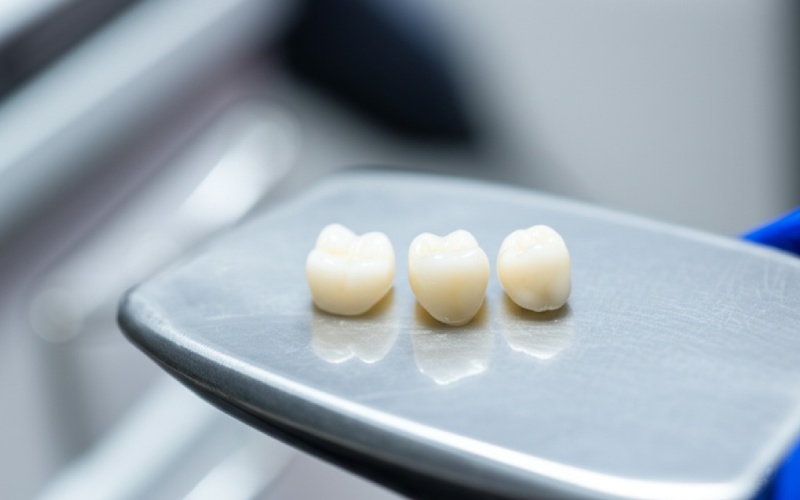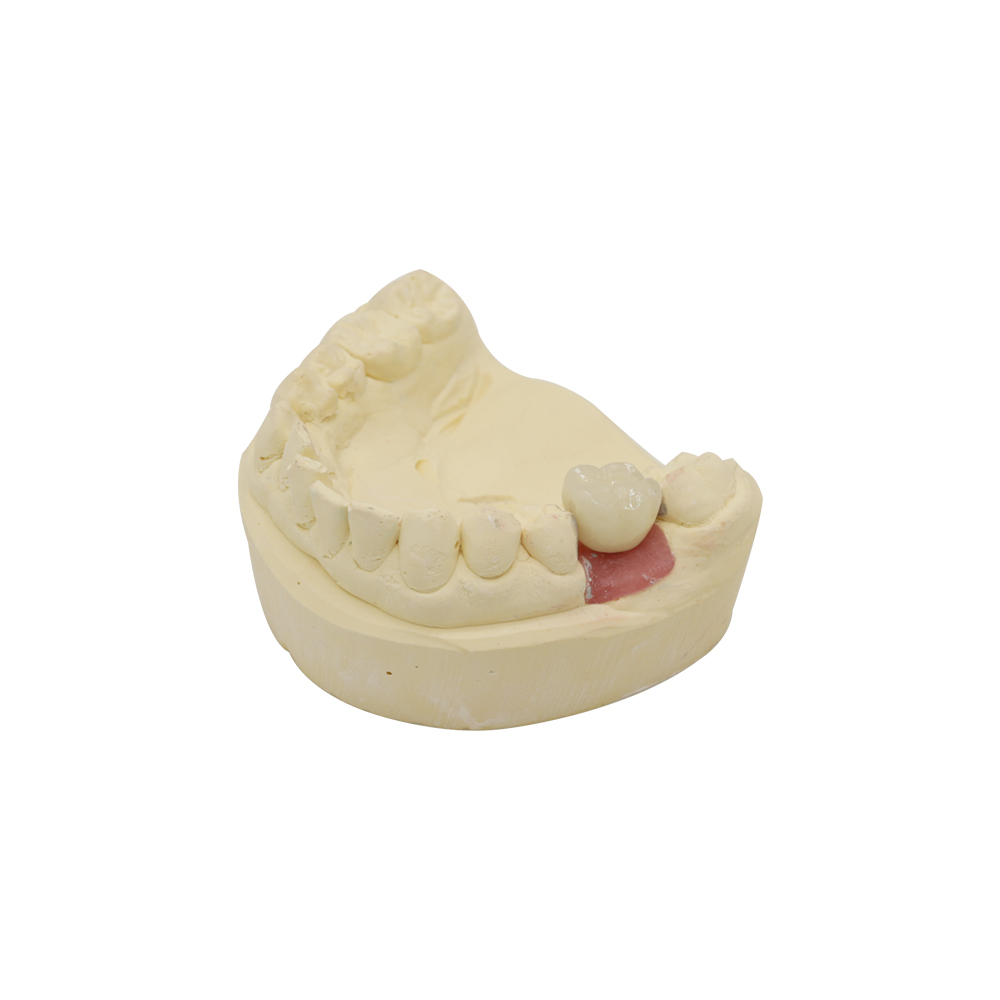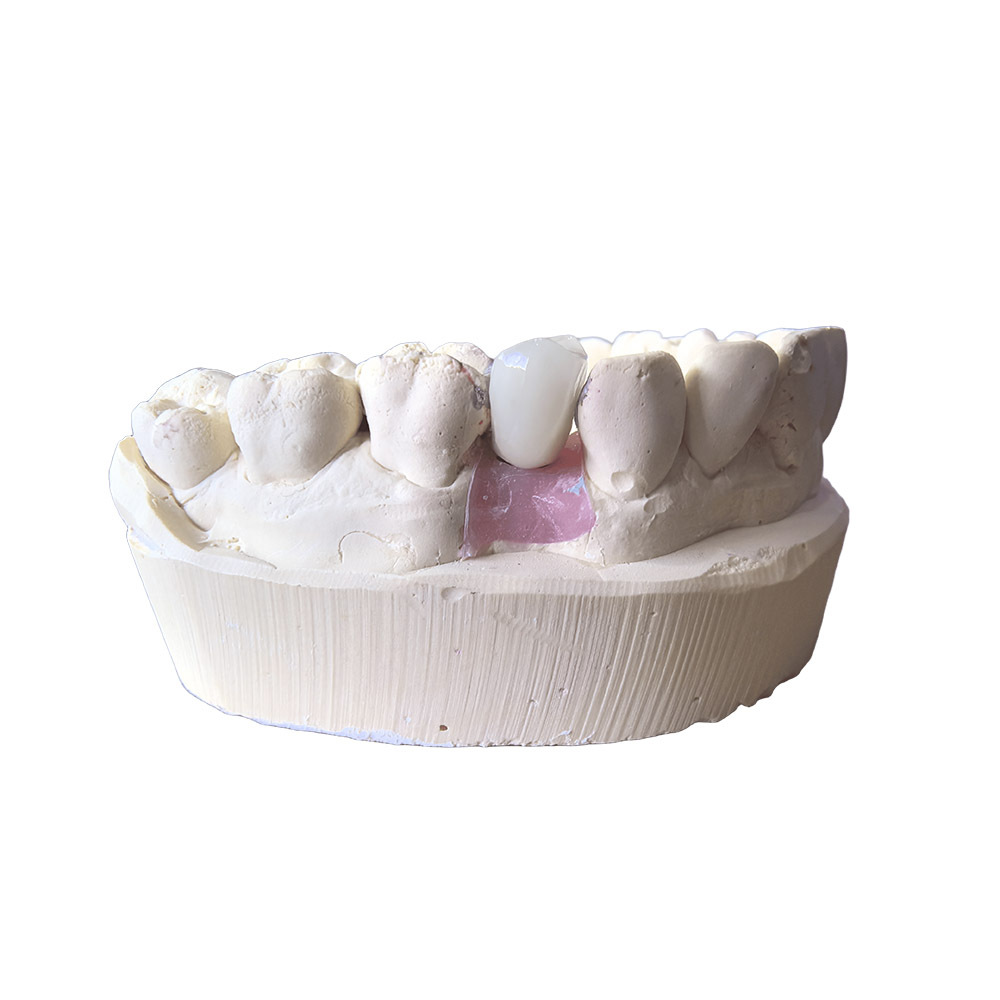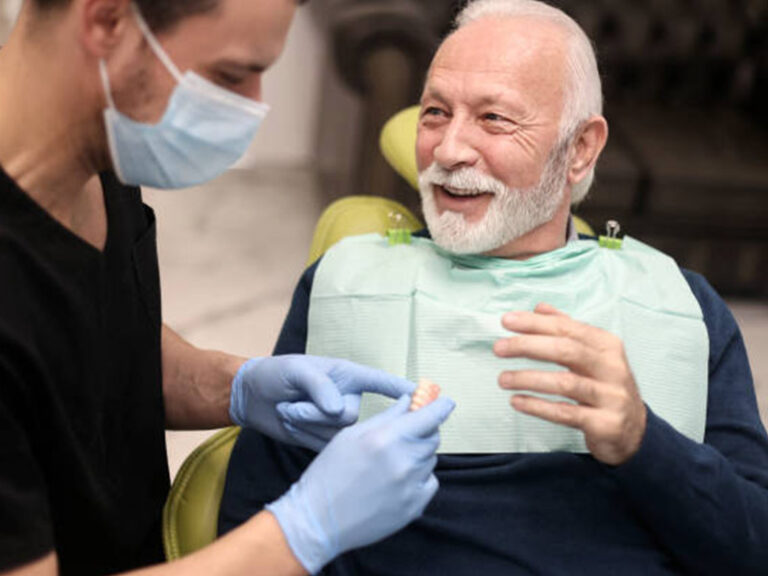
Die Wahl zwischen Zirkonoxidkronen und VMK-Kronen: Ein Leitfaden für Ihre beste Zahnkrone
Which crown is right for you? You might hear your dentist talk about a PFM crown or a zirconia crown. It can be confusing. This article is here to help. I’m going to break down the difference between these two popular types of crowns. We will look at what they are made of, how they look, and how strong they are. By the end, you will understand the choice between a zirconia crown and a PFM crown much better. This will help you and your dentist make the best choice for your oral health.
Inhaltsübersicht
What is a Dental Crown and Why Might I Need One?
Let’s start with the basics. What is a dental crown? Think of it as a small, tooth-shaped cap. This cap is placed over a tooth. It’s used to restore the tooth’s shape, size, strength, and look. Your dentist might suggest a crown for a few reasons. Maybe you have a weak tooth from a lot of decay. A crown can hold that tooth together. Or maybe your tooth is cracked or broken. A crown can fix that. I’ve also seen a crown used to cover a tooth after a root canal procedure.
A dental crown is a very common type of restoration in dentistry. It can also be used to cover a dental implant. An implant is a metal post that acts like a new tooth root. The crown sits on top of the implant, looking and feeling like a real tooth. This is a great tooth replacement option. So, whether you need to save a damaged tooth or finish a dental implant, a crown is a key part of the solution. Getting the right crown can make all the difference for your smile.
What is a PFM Crown? The Classic Choice.
Now, let’s talk about one of the most common types of crowns: the PFM-Krone. PFM stands for Porcelain-Fused-to-Metal. This name tells you exactly what it is. It’s a crown with two parts. Inside, there is a strong metal base. On the outside, there is a layer of tooth-colored porcelain. For a long time, the PFM crown was the go-to choice for dentists and patients. It gives you the strength of metal with the nice look of porcelain.
The PFM crown is a true workhorse in the world of dental crowns and bridges. These crowns are known for their durability and have a long track record of success. They are a cost-effective choice for a strong restoration. The metal inside provides the power you need to chew, and the porcelain outside helps the crown blend in with your other teeth. When you need a reliable crown, especially for your back teeth, a PFM crown is often a great option. These PFMs have helped millions of people restore their smiles.

How is a PFM Crown Made?
Understanding how a PFM crown is made helps you see its pros and cons. The process starts with a thin shell made of a special dental metal alloy. This metal substructure is what gives the PFM crown its great strength. This metal part is made to fit your tooth perfectly. Once the metal part is ready, a skilled dental technician carefully adds a porcelain layer on top of it. This is not just one layer; it is often several thin layers.
This ceramic covering is what makes the crown look like a tooth. The technician shapes and colors the porcelain to match your natural teeth. The crown is then heated at a very high temperature. This fuses the porcelain to the metal, creating a single, strong crown. The result is a PFM restoration that is tough and looks good. The metal provides strength, while the porcelain provides the cosmetic look. This combination has made the PFM crown a staple in dentistry for decades. This type of crown is a very common restoration.
What is a Zirconia Crown? The Modern Star.
Around the early 2000s, a new player came on the scene and changed everything: the Zirkoniumdioxid-Krone. Zirconia is a very interesting material. It’s technically a type of metal oxide, called zirconium oxide. But it looks and acts like a ceramic material. So, you get the best of both worlds. A zirconia crown is made from a single, solid block of this material. This means there is no metal base inside. The entire crown is one piece.
This type of crown, especially the monolithic zirconia crown, is incredibly strong. You will be amazed by their toughness. Because there is no metal, you don’t have to worry about a dark line showing at your gum. The zirconia crown is also very friendly to your body; we call this biocompatible. It’s one of the modern materials that has made dental work better than ever. A zirconia crown is an excellent choice for a strong and beautiful tooth restoration.

Are Zirconia Crowns Really That Strong?
Yes, they are! When we talk about strength in dentistry, the zirconia crown is a champion. This material has exceptional strength. It is very resistant to chipping and fracture. Think about the forces in your mouth when you grind or chew food. You need a crown that can handle that pressure, especially for your posterior teeth. A full contour zirconia crown is one of the most durable restorations you can get. It is much stronger than an all-porcelain crown.
The strength of a zirconia crown comes from the material itself, zirconium oxide. It is so tough that it can be made thinner than a PFM crown. This is a big deal. When a dentist prepares your tooth for a crown, some of the tooth structure has to be removed. Because a zirconia crown can be thinner, less tooth reduction is needed. This is great because it helps save more of your natural tooth. The durability of a zirconia crown means it can be a longer-lasting solution for your broken or weak tooth.
Which Looks Better, a Zirconia Crown or a PFM Crown?
When it comes to looks, or what we call aesthetic quality, the zirconia crown often wins. The biggest issue with a PFM crown is the metal inside. The porcelain layer on top does a good job of hiding it, but it’s not perfect. The metal substructure can sometimes block light from passing through the crown. This can make the PFM crown look a little flat or not as lifelike as a natural tooth. It lacks the translucency of real tooth enamel.
A zirconia crown, on the other hand, is made from a white ceramic material. This allows light to pass through it, much like a natural tooth. This gives the zirconia crown a more translucent and natural-looking appearance. Also, a big problem with a PFM crown is the risk of a dark line appearing at the gumline. This happens if your gum recedes a little, showing the metal edge of the crown. With a zirconia crown, this is impossible because there is no metal. Zirconia crowns offer a superior aesthetic result, making them a top choice for front teeth.
Let’s Compare Durability: Zirconia and PFM Crowns
Both types of crowns are very durable, but they have different strengths. A PFM crown is very strong because of its metal substructure. The metal core is highly resistant to fracture. However, the porcelain layer on top is the weak link. Over time, the porcelain on a PFM crown can chip or break away from the metal. While the crown is still working, the chip can be sharp and not look good.
Compared to zirconia crowns, PFMs have this risk. A monolithic zirconia crown is made of one solid piece. There is no porcelain layer to chip off. This makes the crown itself incredibly resistant to fracture and wear. It can handle heavy chewing forces without a problem. The durability of a solid zirconia crown is one of its biggest selling points. While both crowns are good, the single-piece structure of a zirconia crown often gives it an edge in longevity, as there are fewer ways it can fail. Both of these crowns remain good options.
What About My Gums? Is a Zirconia Crown a Better Fit?
Your gums are a big part of your oral health. You want a crown that your gums will like. This is where being biocompatible is so important. A zirconia crown is highly biocompatible. This means your gum tissue accepts it very well. The surface of a zirconia crown is very smooth, which makes it harder for plaque to stick to it. This can lead to healthier gums around the crown. The fit of a zirconia crown is also very precise, thanks to modern digital technology.
A PFM crown can also work well with your gums. However, some people have metal allergies. The metal in a PFM crown can cause allergic reactions or irritation in a small number of people. Because zirconia crowns are metal-free, they do not cause allergic reactions. This makes a zirconia crown a safer choice for people with sensitive systems. Choosing a crown that is kind to your gum tissue is an important part of any dental restoration.
Is the Process for Zirconia and PFM Crowns the Same?
The steps to get a crown are mostly the same, no matter which type you choose. It usually takes two visits to your dentist. On the first visit, your dentist will prepare your tooth. This means some of the tooth enamel is removed to make space for the crown. For a PFM crown, a bit more tooth reduction is necessary to make room for both the metal and the porcelain layer. Then, your dentist will take an impression or a digital scan of your tooth. This is sent to a Dentallabor where your custom crown is made.
This is where things can differ. Many labs now use digital technology to design and mill a zirconia crown from a solid block. This process is very precise. A PFM crown is made by hand, with a technician building the porcelain layer over the metal. Once the crown is ready, you go back for your second visit. Your dentist will check the fit and color of the new crown. Then, it is cemented onto your tooth. The process for both PFMs and zirconia crowns results in a great final restoration.
How Do I Make the Final Choice for My New Crown?
So, after all this, how do you make the choice? It comes down to a few key things: where the crown will go, your budget, and what is most important to you. If the crown is for a back tooth, like a molar, strength is key. Both a PFM crown and a zirconia crown are strong enough. A PFM crown might be a more cost-effective choice. If you grind your teeth, a very durable full contour zirconia crown might be a better idea to prevent fracture.
If the crown is for a front tooth, looks are very important. Here, a zirconia crown has the edge. It has a more natural, translucent look and no risk of a dark line at the gumline. Zirconia crowns are more expensive, but many people feel the cosmetic benefit is worth it. The best thing to do is talk to your dentist. They will look at your tooth and discuss your needs. Together, you can decide if a PFM crown or a zirconia crown is the right tooth restoration for your smile.
Dinge zum Merken
- PFM-Kronen: These have a metal base with a porcelain layer. They are very strong and have a long history of success. They are a cost-effective choice for a dental crown.
- Zirkoniumdioxid-Kronen: These are made from a solid block of strong, white ceramic material called zirconium oxide. There is no metal inside.
- Looks: A zirconia crown generally looks more natural than a PFM crown. It is more translucent and won’t show a dark metal line at your gum.
- Strength: Both crowns are strong. However, a monolithic zirconia crown is less likely to chip because it is one solid piece. The porcelain on a PFM crown can sometimes chip away from the metal.
- Biocompatibility: A zirconia crown is very biocompatible and great for people with metal allergies.
- Tooth Preparation: A zirconia crown often requires less of your natural tooth to be removed compared to a PFM crown.
- Sprechen Sie mit Ihrem Zahnarzt: The final decision on your new crown should be made with your dentist. They can help you choose the best crown for your specific tooth and needs.




